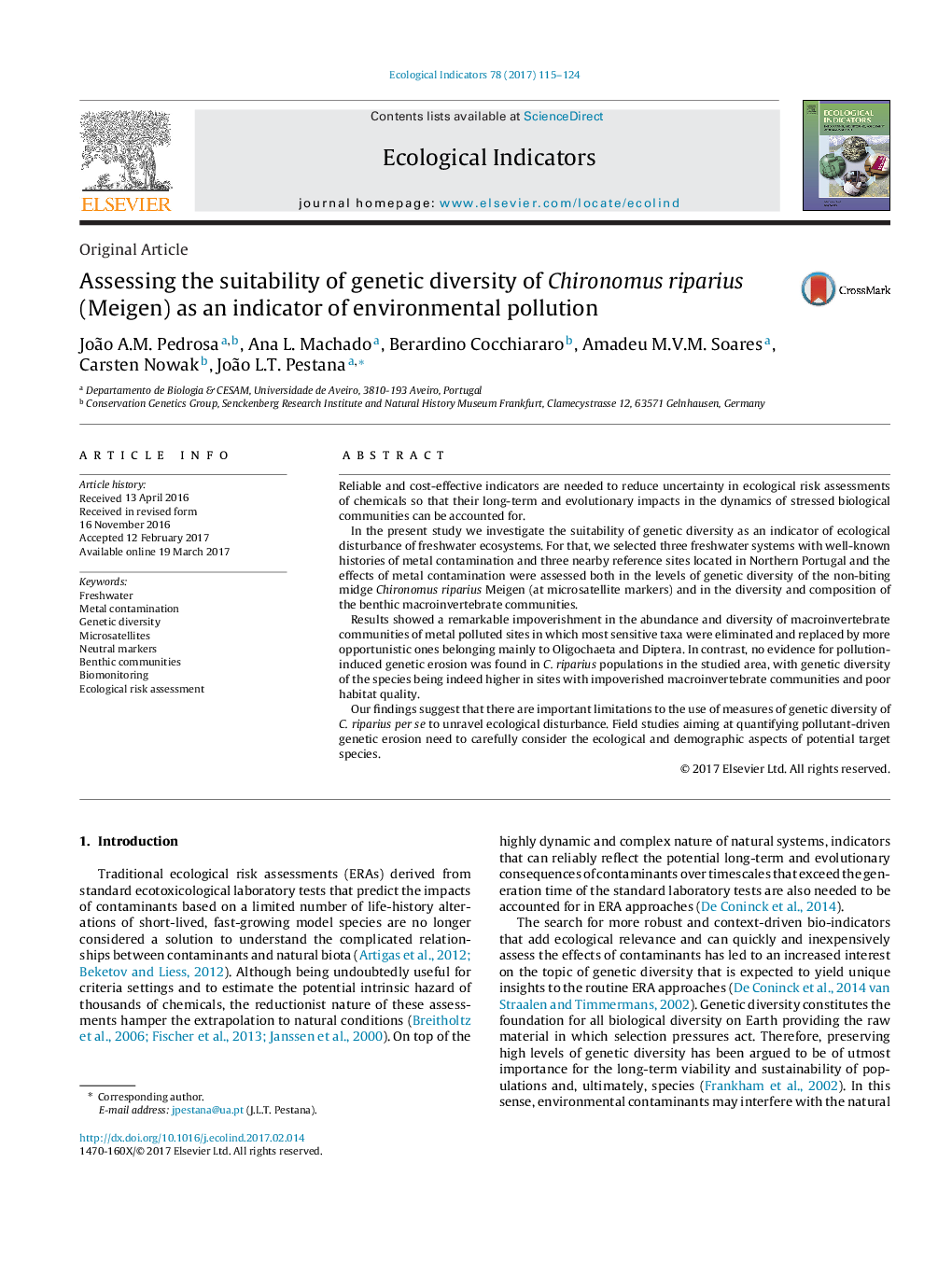| Article ID | Journal | Published Year | Pages | File Type |
|---|---|---|---|---|
| 5741619 | Ecological Indicators | 2017 | 10 Pages |
â¢Genetic diversity of natural populations is a potential indicator of ecological disturbance.â¢Macroinvertebrate community structure was compared with genetic diversity of C. riparius populations in polluted and reference freshwaters.â¢We found a significant impoverishment of macroinvertebrate communities in sites with an history of metal pollution.â¢We found no evidences of genetic erosion of C. riparius populations in polluted sites.â¢Results suggest limitations to the use of genetic diversity of C. riparius to unravel long term ecological disturbance.
Reliable and cost-effective indicators are needed to reduce uncertainty in ecological risk assessments of chemicals so that their long-term and evolutionary impacts in the dynamics of stressed biological communities can be accounted for.In the present study we investigate the suitability of genetic diversity as an indicator of ecological disturbance of freshwater ecosystems. For that, we selected three freshwater systems with well-known histories of metal contamination and three nearby reference sites located in Northern Portugal and the effects of metal contamination were assessed both in the levels of genetic diversity of the non-biting midge Chironomus riparius Meigen (at microsatellite markers) and in the diversity and composition of the benthic macroinvertebrate communities.Results showed a remarkable impoverishment in the abundance and diversity of macroinvertebrate communities of metal polluted sites in which most sensitive taxa were eliminated and replaced by more opportunistic ones belonging mainly to Oligochaeta and Diptera. In contrast, no evidence for pollution-induced genetic erosion was found in C. riparius populations in the studied area, with genetic diversity of the species being indeed higher in sites with impoverished macroinvertebrate communities and poor habitat quality.Our findings suggest that there are important limitations to the use of measures of genetic diversity of C. riparius per se to unravel ecological disturbance. Field studies aiming at quantifying pollutant-driven genetic erosion need to carefully consider the ecological and demographic aspects of potential target species.
